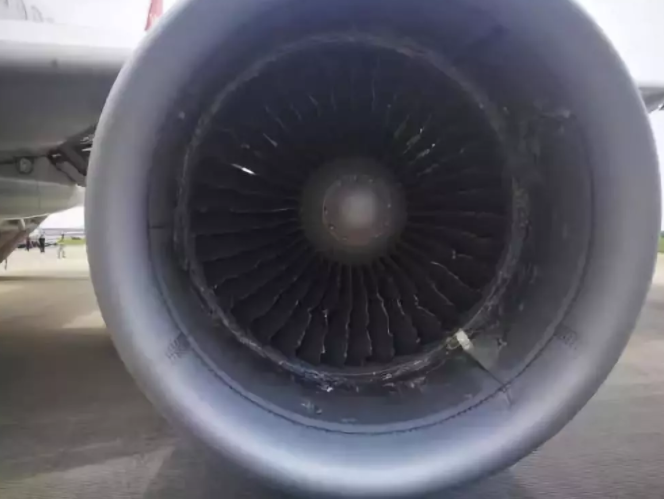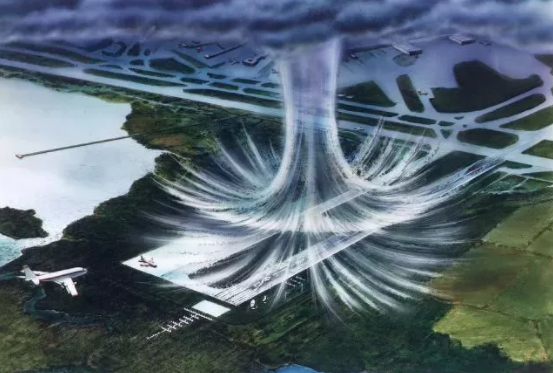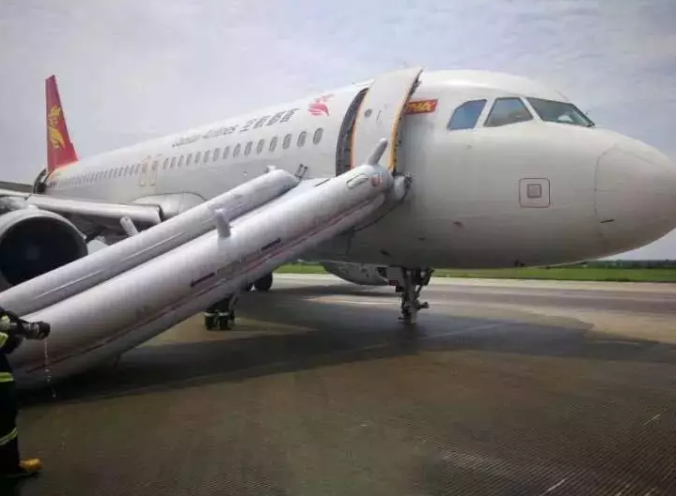A Chinese flight was forced to divert to an alternate airport after a mechanical failure likely caused by wind shear, authorities said Tuesday.
Flight JD5759, operated by Capital Airlines, was en route from Beijing to Macao, before being forced to divert just prior to landing to Shenzhen, South China's Guangdong Province, at 11:58 am on Tuesday, said a source at the Shenzhen airport. The 157 passengers and nine crew members on the aircraft evacuated safely.

The broken part of the plane. (Photos:Science_China)
"In the process of circling, the plane was going up and down continuously, many passengers were crying,” said a passenger on the flight.
The reason for the accident
The Civil Aviation Shenzhen Supervision Bureau has been involved in the investigation and made a preliminary judgment. It suspects the aircraft encountered “wind shear” when approaching to land at the Macau airport. Realizing that the landing gear might be damaged, the pilot immediately started emergency procedures and diverted to the Shenzhen airport.

The broken part of the aircraft.
It is recognized by the international aviation community that low-altitude "wind shear" is a risk factor during takeoff and landing. It is known in aviation circles as the "invisible killer.”
Definition of "wind shear"
Wind shear is a difference in wind speed and direction over a very short distance in the atmosphere. Atmospheric wind shear is normally described as either vertical or horizontal wind shear.

Graphic demonstration of "wind shear".
Statistics indicate that air accidents caused by wind shear mainly occur in the takeoff and landing stages below 300 meters, especially in the landing phase.
Causes of "wind shear"
(1)Weather change
If thunderstorms or other strong convective weather occurs, strong sinking airflow will be produced, and cold masses intersecting near the front of the wind path will produce wind shear.
(2)Geographical environment
Wind shear is more likely near tall mountains.
(3)Human activity
Wind shear caused by turbulence after the takeoff of a previous aircraft may affect the following plane if the interval between takeoffs is too short.
Effects on flight
The plane's ability to take off and land normally depends mainly on the lift mechanism of the wings in the air, which requires steady airflow around the aircraft wing.
Because wind shear is a powerful change in the direction and speed of the wind, it will seriously interfere with the lifting ability of the wings, and thereby interfere with the flight, especially during the course of takeoff and landing. When a plane encounters wind shear, it can cause the engine to die, or severely damage the plane’s structure.

A landing plane.
Therefore, the detection and warning for wind shear is a key and difficult point of civil aviation meteorological forecast observation.
Resolution
In the event of wind shear, an airline should consider taking an alternate route to avoid the problematic area.
Other Dangers
Wind shear affects more than aircraft. Strong vertical wind shear can also cause damage to bridges and high-rise buildings, posing a danger to human life.
(Source: Science_China)


